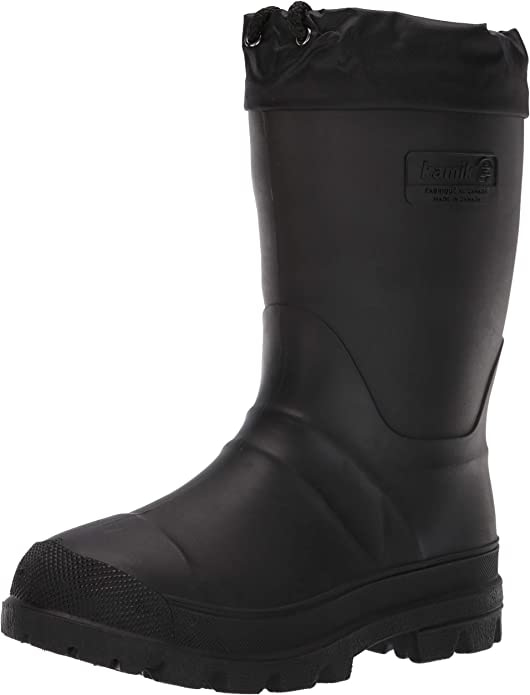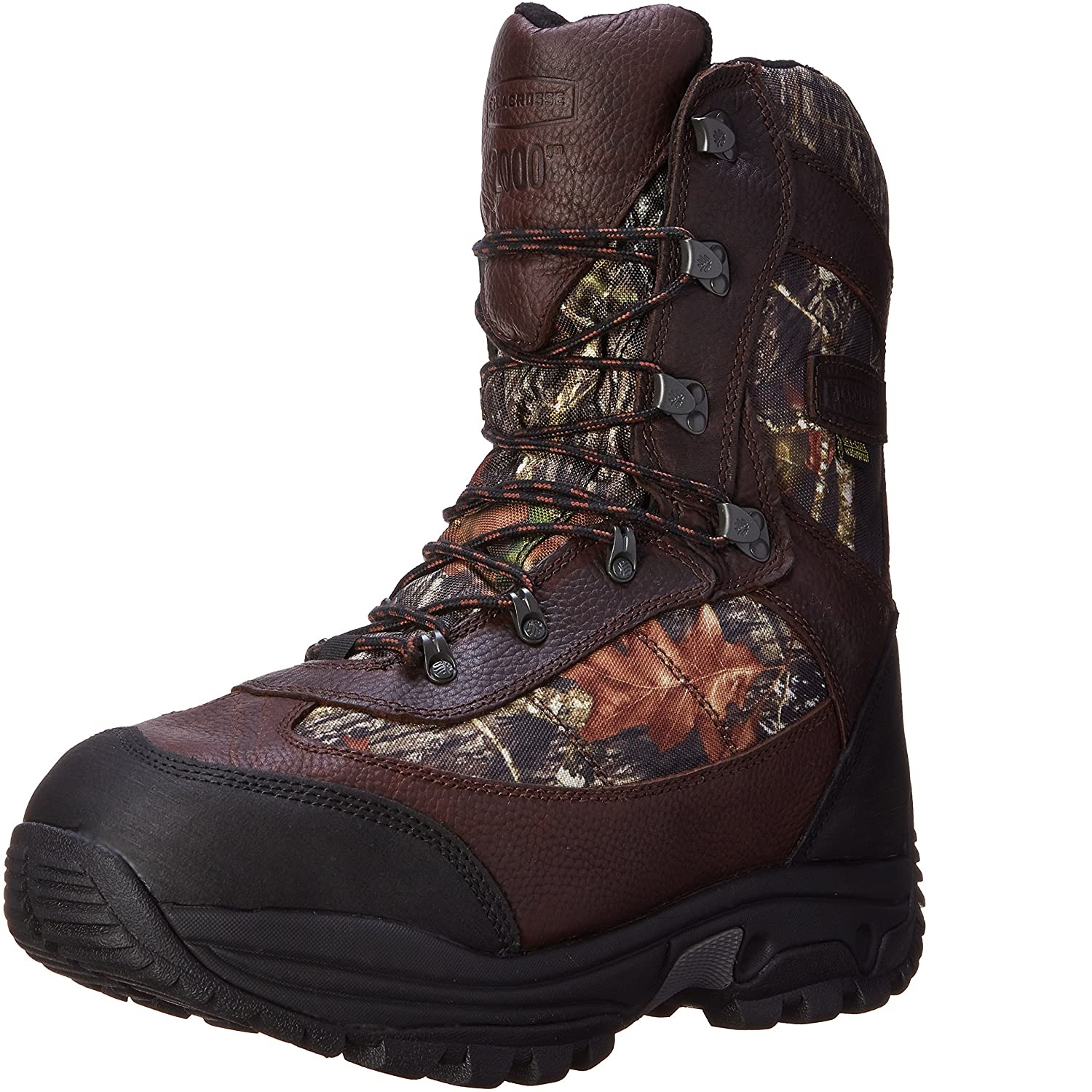Why Cold Weather Hunting Boots Matter
Hunting in cold weather can be a thrilling experience, but it also poses unique challenges. One of the most critical components of a successful and safe hunting trip is having the right gear, particularly when it comes to footwear. Cold weather hunting boots for men are not just a luxury, but a necessity. Without them, hunters risk facing a range of problems that can quickly turn a fun outing into a miserable and even dangerous experience.
Frostbite, hypothermia, and decreased performance are just a few of the risks associated with hunting in cold weather without proper footwear. Cold feet can lead to a loss of focus, reduced reaction time, and increased fatigue, all of which can compromise a hunter’s ability to make accurate shots and respond to changing situations. Moreover, cold weather hunting boots for men can mean the difference between a successful hunt and a failed one, as they provide the necessary support, stability, and traction to navigate challenging terrain.
By investing in a quality pair of cold weather hunting boots for men, hunters can ensure a safe, comfortable, and successful hunting experience. It’s essential to prioritize the right gear, especially when venturing into harsh winter conditions.
Key Features to Look for in Cold Weather Hunting Boots
When it comes to selecting the right cold weather hunting boots for men, there are several key features to consider. These features can make all the difference in ensuring a safe, comfortable, and successful hunting experience. Here are some of the essential features to look for in cold weather hunting boots:
Insulation is a critical component of cold weather hunting boots. Look for boots with high-quality insulation materials, such as Thinsulate or PrimaLoft, that can retain warmth even in wet conditions. Waterproofing is another essential feature, as it prevents water from entering the boot and keeps feet dry. Membrane technology, such as Gore-Tex or eVent, is a popular choice for waterproofing in cold weather hunting boots.
Ankle support is also crucial, as it provides stability and prevents twists and sprains. A good pair of cold weather hunting boots should have a sturdy ankle collar and a comfortable, cushioned insole. Additionally, consider boots with a rugged outsole that can grip various terrain, including snow, ice, and mud.
Other features to consider include breathability, moisture-wicking linings, and adjustable cuffs. Breathability helps to prevent the buildup of moisture inside the boot, while moisture-wicking linings draw sweat away from the skin. Adjustable cuffs allow for a customizable fit and can help to prevent cold air and snow from entering the boot.
By considering these key features, hunters can find the perfect pair of cold weather hunting boots for men that meet their specific needs and preferences.
How to Choose the Best Insulation for Your Hunting Boots
When it comes to cold weather hunting boots for men, insulation is a critical component. The right insulation can make all the difference in keeping feet warm and dry in harsh winter conditions. But with so many insulation options available, it can be overwhelming to choose the best one for your needs.
Thinsulate is a popular insulation choice for cold weather hunting boots. This synthetic insulation is known for its warmth, lightweight, and breathability. It’s an excellent option for hunters who need to stay warm in wet conditions. PrimaLoft is another popular insulation choice, offering exceptional warmth-to-weight ratio and water resistance.
Other insulation options include Polarguard, Holofill, and ThermoBall. Each of these insulation types has its unique benefits and drawbacks. For example, Polarguard is a great choice for extreme cold weather, while Holofill is a more affordable option that still provides excellent warmth.
When selecting the best insulation for your cold weather hunting boots, consider the following factors: activity level, weather conditions, and personal comfort preferences. If you’ll be engaging in high-intensity activities, such as hiking or running, you may need a more breathable insulation like Thinsulate. If you’ll be hunting in extremely cold conditions, a warmer insulation like Polarguard may be a better choice.
Ultimately, the best insulation for your cold weather hunting boots will depend on your specific needs and preferences. By understanding the different insulation options available, you can make an informed decision and stay warm and dry on your next hunting trip.
The Importance of Waterproofing in Cold Weather Hunting Boots
Waterproofing is a crucial feature to consider when selecting cold weather hunting boots for men. Hunting in wet and snowy conditions can be challenging, and having boots that can keep feet dry is essential. Waterproofing not only keeps feet dry but also prevents cold air from entering the boot, reducing the risk of frostbite and hypothermia.
Membrane technology is a popular method of waterproofing in cold weather hunting boots. Membranes like Gore-Tex, eVent, and similar technologies create a barrier between the outside environment and the foot, preventing water from entering the boot while allowing moisture to escape. This breathability is essential in cold weather hunting boots, as it prevents the buildup of moisture inside the boot.
Breathability is also critical in cold weather hunting boots, as it helps to prevent the buildup of moisture inside the boot. When feet sweat, the moisture can become trapped inside the boot, leading to cold and wet feet. Breathable materials and membranes help to wick away moisture, keeping feet dry and comfortable.
In addition to membrane technology, other waterproofing methods include waterproof coatings, seam sealing, and gusseted tongues. These features work together to create a waterproof barrier that keeps feet dry in wet and snowy conditions.
When selecting cold weather hunting boots for men, look for boots with a waterproof rating, such as IPX7 or higher. This rating indicates that the boot can withstand immersion in water beyond 1 meter. Additionally, consider boots with breathable materials and membranes, as well as features like gusseted tongues and seam sealing.
By investing in cold weather hunting boots with waterproofing features, hunters can stay dry and comfortable in even the most challenging winter conditions.
Top-Rated Cold Weather Hunting Boots for Men: Product Reviews
When it comes to cold weather hunting boots for men, there are many great options available. To help you make an informed decision, we’ve reviewed and compared some of the top-rated cold weather hunting boots on the market.
The Original Muck Boot Company’s Arctic Sport Boot is a popular choice among hunters. With its 5mm neoprene construction and fleece-lined interior, this boot provides excellent warmth and comfort in cold weather. The boot also features a rugged outsole and a breathable membrane to keep feet dry.
LaCrosse’s Alphaburly Pro Boot is another top-rated option. This boot features a premium leather upper and a Thinsulate insulation package to keep feet warm in extreme cold. The boot also has a rugged outsole and a gusseted tongue to keep debris out.
Baffin’s Enduro Snow Boot is a great choice for hunters who need a boot that can handle extreme cold and snow. This boot features a rugged rubber outsole and a waterproof membrane to keep feet dry. The boot also has a thermal insole and a fleece-lined upper to provide excellent warmth.
Other top-rated cold weather hunting boots for men include the Kamik Hunter Boot, the Columbia Ice Maiden II Boot, and the Sorel Caribou Boot. Each of these boots offers unique features and benefits, so it’s essential to consider your specific needs and preferences when making a decision.
When selecting the best cold weather hunting boots for men, consider factors such as insulation, waterproofing, and ankle support. Look for boots with breathable membranes, rugged outsoles, and comfortable insoles. By investing in a quality pair of cold weather hunting boots, you can stay warm and dry on your next hunting trip.
What to Consider When Sizing Cold Weather Hunting Boots
When it comes to sizing cold weather hunting boots for men, it’s essential to get it right. Ill-fitting boots can lead to discomfort, blisters, and even affect your performance in the field. Here are some tips to consider when sizing cold weather hunting boots:
First, consider the thickness of the socks you plan to wear. Cold weather hunting boots for men are designed to accommodate thick, warm socks, so make sure to factor this in when trying on boots. Look for boots with a roomy toe box and a comfortable, cushioned insole to ensure a comfortable fit.
Next, think about the width of your foot. If you have a wider foot, look for boots with a wider last to ensure a comfortable fit. Some brands, such as The Original Muck Boot Company, offer wide widths in their cold weather hunting boots for men.
Another important consideration is the height of the boot. Cold weather hunting boots for men come in a range of heights, from ankle-high to knee-high. Consider the terrain and conditions you’ll be hunting in, and choose a boot that provides the right level of support and protection.
Finally, don’t be afraid to try on several different sizes and styles to find the one that fits best. Cold weather hunting boots for men are an investment, and it’s worth taking the time to find the right pair.
By considering these factors and taking the time to find the right fit, you can ensure that your cold weather hunting boots for men provide the comfort and support you need to stay focused and successful in the field.
Breaking in Your Cold Weather Hunting Boots: Tips and Tricks
Breaking in a new pair of cold weather hunting boots for men can be a daunting task, but with the right approach, you can ensure a comfortable and successful hunting trip. Here are some tips and tricks to help you break in your new boots:
First, start by conditioning the leather. Apply a leather conditioner or waterproofing spray to the boots to help soften the leather and prevent cracking. This will make the boots more pliable and easier to break in.
Next, wear the boots around the house or on short walks to help mold them to your feet. This will help the boots conform to your foot shape and reduce the risk of blisters.
Another important step is to gradually increase the duration and intensity of your wear. Start with short periods of wear and gradually increase the time as the boots become more comfortable.
To prevent blisters, wear thick socks and apply blister prevention products, such as moleskin or blister shields, to high-friction areas. You can also use foot powder or antiperspirant to reduce moisture and prevent blisters.
Finally, consider using a boot stretcher or tree to help maintain the shape of the boot and prevent creasing. This will help extend the life of the boot and keep it looking its best.
By following these tips and tricks, you can ensure a comfortable and successful break-in period for your new cold weather hunting boots for men. Remember to be patient and take your time, as breaking in a new pair of boots takes time and effort.
Conclusion: Stay Warm and Dry on Your Next Hunting Trip
Choosing the right cold weather hunting boots for men is a crucial decision that can make all the difference in the success of your hunting trip. By considering the essential features, such as insulation, waterproofing, and ankle support, and selecting the right insulation type and size, you can ensure a comfortable and successful hunt.
Remember, cold weather hunting boots for men are an investment in your safety and performance. Don’t settle for a low-quality pair that may leave you cold, wet, and miserable. Instead, invest in a quality pair that will keep you warm, dry, and comfortable, even in the most extreme cold weather conditions.
By following the expert guidance provided in this article, you can make an informed decision and choose the best cold weather hunting boots for men for your next hunting trip. Stay warm, stay dry, and stay successful with the right pair of boots.







